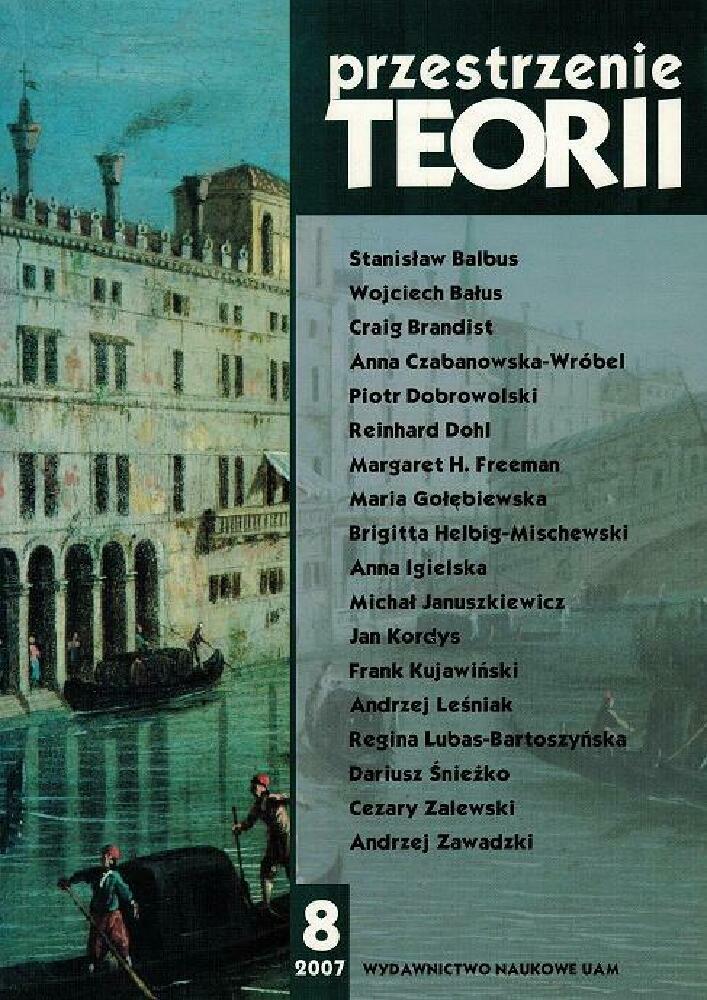Abstrakt
The article deals with a category of repetition. This category is used as an artistic technique by Tadeusz Kantor in his unique theatre performances. The author analyzes an aesthetics' agenda of its practical use. The category is shown in a philosophical perspective of Soren Kierkegaard's, Cilles Deleuze's and Henri Bergson's writings. Cricot 2 theatre late performances (called Theatre of the Memory) were repeating Kantor's personal past and his family's history by re-playing it onstage. An artistic attempt was about to form actors' gestures and activities in a shape of one's memories. A problem, that a director had to deal with was connected with a deformation and a blur of remembered pictures. Each one of these faint pictures was under an influence of passing time and experiences that came with it. Another kind of distortion was made by actors, that were unable to embody the people from the past. Kantor's artistic imagination could make a single picture that was taken from the past (e.g. as a photograph) alive. Memory of the artist, prompted by a prosthetic celluloid device was reawakening to alternative existences of the people that have passed by. Theatre inspired the repetition that introduced a difference to an original. Continuation of one's life that was retaken leads to a development of a repeated gesture and an object that opens a new field of its meaning. Infinite repetition approaches its infinite forms to an idealistic idea of a subject, a gesture, an activity.Licencja
Autorzy
Autorzy tekstów przyjętych do publikacji w czasopiśmie „Przestrzeniach Teorii” są zobowiązani do wypełnienia, podpisania i odesłania na adres redakcji umowy o udzielenie nieodpłatnej licencji do utworów, z zobowiązaniem do udzielania sublicencji CC.
Zgodnie z umową, autorzy tekstów opublikowanych w czasopiśmie „Przestrzeniach Teorii” udzielają Uniwersytetowi im. Adama Mickiewicza w Poznaniu niewyłącznej i nieodpłatnej licencji oraz zezwalą na użycie sublicencji Creative Commons Attribution-NonCommercial-NoDerivatives 4.0 International (CC BY-NC-ND 4.0).
Autorzy zachowują prawa do dalszego, swobodnego rozporządzania utworem.
Autorzy, którzy wykorzystują w swoim tekście cudze utwory (np. ilustracje, fotografie) proszeni są o dostarczenie do redakcji czasopisma zgodę na publikację od uprawnionych podmiotów.
Użytkownicy
Zainteresowani użytkownicy internetu uprawnieni są do korzystania z utworów opublikowanych po 2015 roku „Przestrzeniach Teorii” tylko w calach niekomercyjnych, pod następującymi warunkami:
- uznanie autorstwa - obowiązek podania wraz z rozpowszechnionym utworem, informacji, o autorstwie, tytule, źródle (odnośniki do oryginalnego utworu, DOI) oraz samej licencji;
- bez tworzenia utworów zależnych - utwór musi być zachowany w oryginalnej postaci, nie można bez zgody twórcy rozpowszechniać np. tłumaczeń, opracowań.
Do wszystkich tekstów opublikowanych przed 2015 r. prawa autorskie są zastrzeżone.
Inne
Uniwersytet im. Adama Mickiewicza w Poznaniu zachowuje prawo do czasopisma jako całości (układ, forma graficzna, tytuł, projekt okładki, logo itp.).
